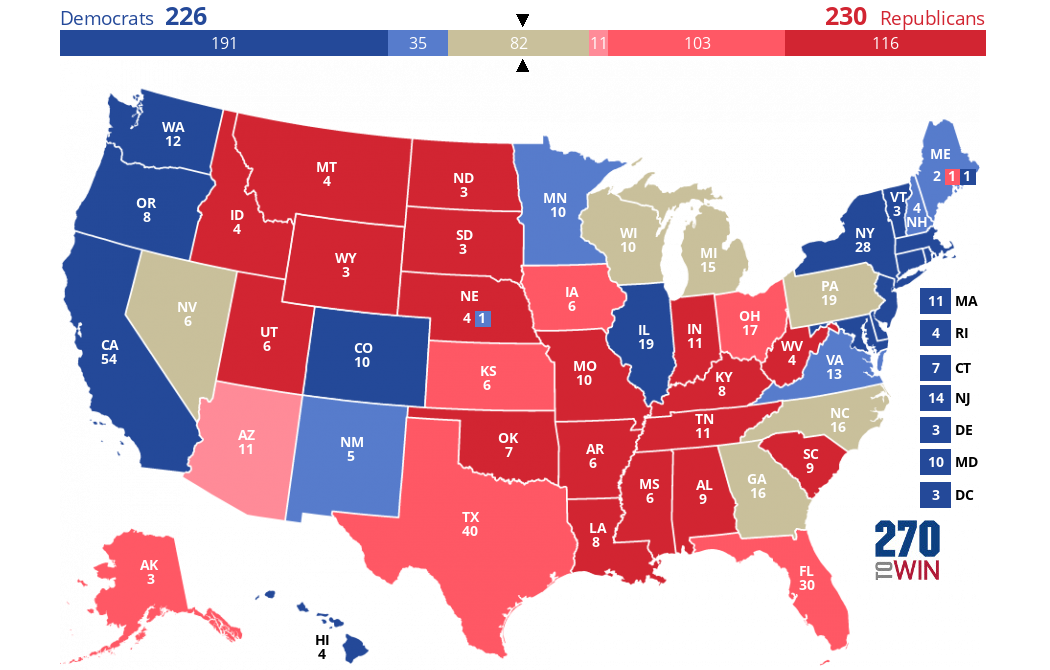2012 Electoral Votes by State
By 270toWin Staff
December 21, 2010
Modified February 21, 2012 to insert map and update link to gerrymandered districts.
The 2010 Census results are out, showing the U.S. resident population grew to 308.7 million people as of April 1, 2010, vs. 281.4 million in 2000. Use the preceding link to see the Census Bureau's press release, and links to all the facts and figures regarding demographics and other trends.
What we care about here, of course, is the impact of these results on the electoral vote map and thus the 2012 presidential election. The Census population counts in each state leads to a reapportionment of the number of Representatives per state. Since the number of electoral votes for each state equals the number of Representatives +2 (for the number of Senators), the electoral vote count changes as well. The new electoral vote distribution will be in effect for the 2012 election.
Our interactive 2012 electoral map now includes the new distribution. Just choose the 2012 option in the "Electoral View" at the bottom left of the map. Overall, if the 2008 election were held using the 2012 apportionment, Obama would have received 6 fewer electoral votes... 359 instead of 365.
This is because the 2010 Census shows that the U.S. population continues a decades-long trend toward the south and the west. Although Obama won some of these growth states in 2008, on balance they voted Republican for a net shift of 6 electoral votes.
The big winner is Texas, adding 4 electoral votes. Florida gained 2 while New York and Ohio each lost 2. Gaining one electoral vote each are Arizona, Georgia, Nevada, South Carolina, Utah and Washington. Losing one electoral vote each are Illinois, Iowa, Louisiana, Massachusetts, Michigan, Missouri, New Jersey and Pennsylvania.
Looking beyond the Electoral Vote distribution, reapportionment leads to redistricting, the redrawing of Congressional district boundaries. This is controlled by state governments. While redistricting will take place in most states, it is a particularly important topic in states gaining or losing seats. In states losing seats, you may see two incumbents squaring off against each other in a 2012 primary or general election. Redistricting will occur in time for the 2012 election, and the newly apportioned House will be seated in Janaury, 2013.
In an ideal world, congressional districts would be drawn objectively, by computer, dividing up a state's population evenly, by location. However, redistricting in many states leads to gerrymandering, which is basically the creation of districts based on other demographic criteria, and is mostly done to protect incumbents. Many of these will change for 2012, but check out this slideshow of the 20 most gerrymandered districts created after the 2000 Census.


